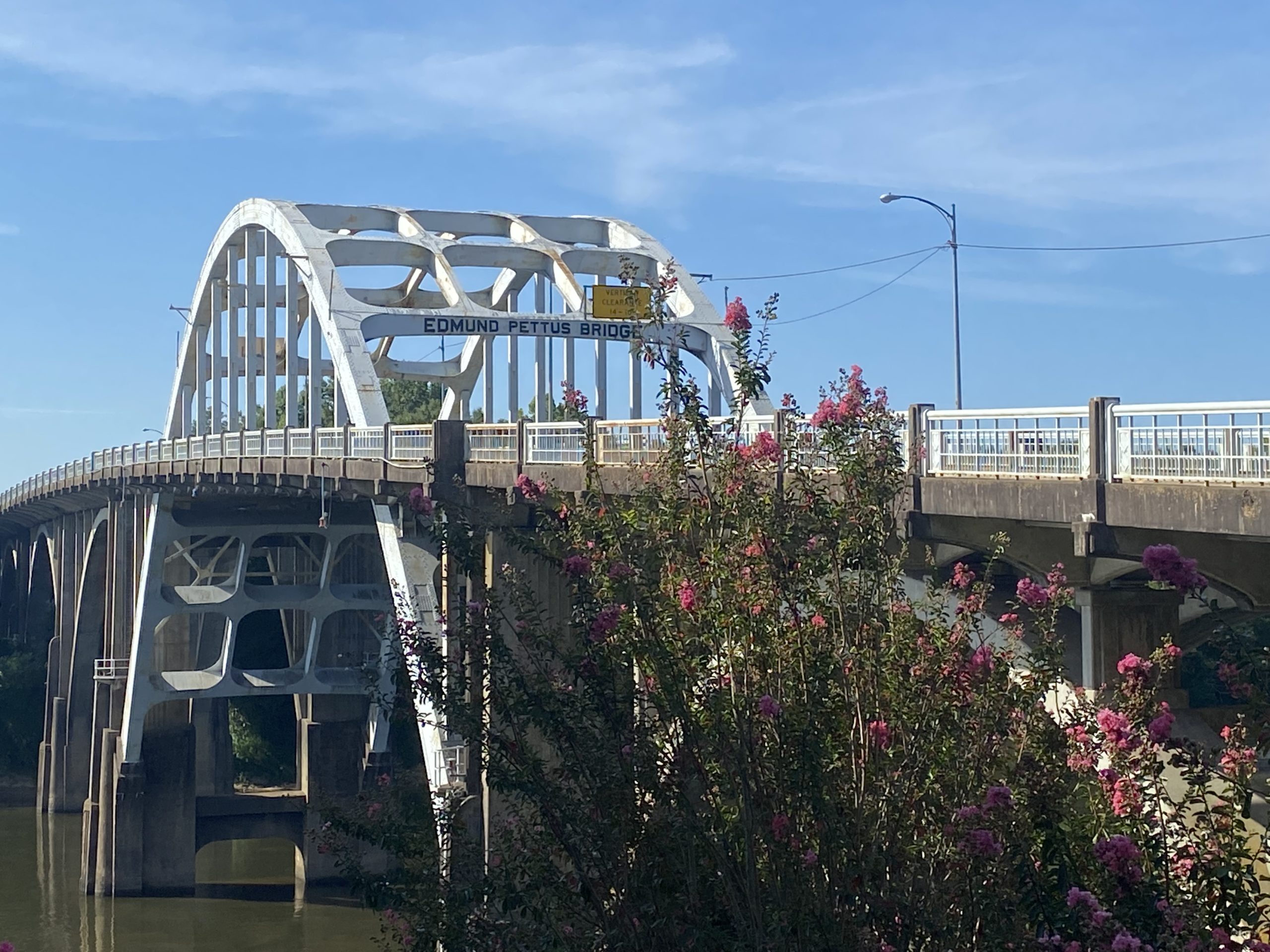To me, the word pilgrimage has always evoked treks to ancient settings – devout members of many faiths journeying to the Holy Land or curious Americans looking for their ancestors in the Old Country. I was privileged to be included in a recent pilgrimage only hours away from Knoxville, and there was no protective layer of centuries buffering the impact of the destination.

“Four Spirits” at Kelly Ingram Park memorializes the girls killed in a bombing at 16th Street Baptist Church.
My church announced in June that it would be offering a pilgrimage to civil rights historic sites in Alabama in August. As a white child of the 1960s, I was mostly removed from the turbulence of that decade. But as an adult, I have made it a point to learn what I was oblivious to as a youngster. This trip sounded like an invaluable experience.
Brent McDougal, the senior pastor of First Baptist Church of Knoxville (of which I am a member), grew up in Alabama and is well versed in its history. He selected the itinerary and laid the groundwork for our group of 12.
Immediately, any sense of “the past” was erased. Events that took place 60 and 70 years ago felt current in today’s climate. We were immersed in sites and among interpretations that made a direct connection to things that are happening today.

The Welsh Window at 16th Street Baptist Church, designed by John Petts, depicts a Black Christ with his right arm pushing away hatred and injustice and his left offering forgiveness.
We started in Birmingham’s Civil Rights District, which includes Kelly Ingram Park, the Civil Rights Institute and 16th Street Baptist Church, among other sites. The park has a number of paths and sculptures that commemorate people and events of the 20th century’s racial turmoil. It was a solemn visit, reading the plaques that explained the figures, but there was also a sense of serenity, an implication that things have changed for the better because of these people.
No photography is allowed in the Birmingham Civil Rights Institute – or inside the 16th Street Baptist Church (except for the sanctuary). Visitors are encouraged to steep themselves in the powerful exhibits.

Across from the “Four Spirits” at Kelly Ingram Park, 16th Street Baptist stands.
I regret to say I’ve never seen Spike Lee’s “4 Little Girls,” a documentary about the September 1963 bombing at 16th Street Baptist Church that took the lives of three 14-year-olds – Addie Mae Collins, Carole Robertson and Cynthia Wesley – and 11-year-old Denise McNair. So I had no idea that 12-year-old Sarah Collins, Addie Mae’s sister, was also in the basement restroom when the explosives planted by white supremacists went off. The bomb was under the stairs on the wall outside. Sarah was hit in the face by shrapnel and blinded, terrified and alone, with her friends dead just a few feet away; she tells her story in video footage. Dozens of others at the church and on the street were injured.
In Montgomery, we went to the Legacy Museum, the National Memorial for Peace and Justice, and the Rosa Parks Museum. The story of Parks and the subsequent Montgomery Bus Boycott is outrageous and inspiring, with far more detail than the usual accounts. The National Memorial is sobering.
The Legacy Museum is, to say the least, overwhelming. And it needs to be.
Officially The Legacy Museum: From Enslavement to Mass Incarceration, this should be a field trip for every high-schooler and a must-see for every American who claims to believe in democracy. This is how to comprehend the enormity of the legacy of enslavement.
Those who dismiss the concept of racial reparations or worry about their children being taught Critical Race Theory in school need a big dose of this reality. The museum pulls all the threads together – from the slave trade in Africa to the Middle Passage to the horror of life as an enslaved Black person in North America to Reconstruction to Jim Crow to the civil-rights era to George Floyd.
So much is covered that it’s impossible to take it all in in one visit. I would think multiple trips over a period of months would be kinder to the psyche. It’s impossible to say “hit the highlights” because everything stands out. The section on lynchings has really stayed with me. A film about the perspective on Western slavery from the perspective of contemporary Africa broke my heart. There’s a lot of reading, but there are also many innovative exhibits that keep the experience from feeling exhausting.

The Lowndes Interpretive Museum explains how Alabama kept Black people from voting and details the historic Selma to Montgomery March.
We spent our last day in Selma, starting point of the famous Selma to Montgomery marches to demand voting rights for Black citizens, including the disastrous first one, known as “Bloody Sunday.” The visit answered many questions I had about the logistics of the ultimate march, and again, it was sobering. More information lay beyond the Edmund Pettus Bridge – both on the cruel history of voting rights in Alabama and the details of the final march – at the Lowndes Interpretive Center, a National Park Service site on the U.S. Civil Rights Trail.
In our climate of banning books and limiting subjects that students should be learning, this felt like the right trip at the right time for me. And it did indeed feel like a pilgrimage – not just for education, but in gratitude to the brave people who forced our country to move forward, even if we still have a long way to go.
Betsy Pickle is a veteran freelance writer and editor with lifelong connections to East, South and Downtown Knoxville.

At Kelly Ingram Park, a sculpture depicts an iconic moment in civil rights history as Birmingham police brought out dogs to brutalize protesters.

